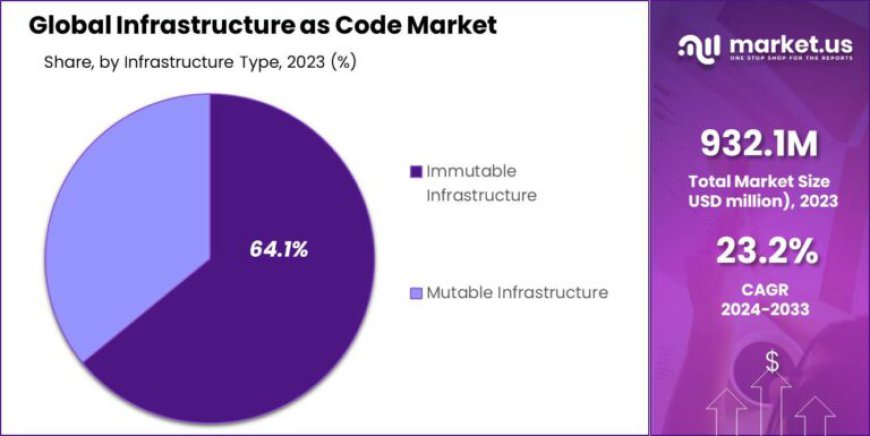Infrastructure as Code Market: Key Trends Shaping the Future

The Infrastructure as Code (IaC) market is revolutionizing the way businesses manage their IT infrastructure. Traditionally, setting up and configuring servers and networks required significant manual effort and expertise, often leading to inconsistencies and delays. With IaC, organizations can automate these processes by defining their infrastructure through code, similar to how software applications are developed. This not only speeds up deployments but also allows teams to maintain consistency and improve collaboration between developers and operations staff. The Global Infrastructure as Code Market size is expected to be worth around USD 7,508.8 Million By 2033, from USD 932.1 Million in 2023, growing at a CAGR of 23.2% during the forecast period from 2024 to 2033.
Growth Factors
Several key factors are contributing to the rapid growth of the Infrastructure as Code market. One major driver is the increasing adoption of cloud computing, as businesses seek to leverage the scalability and flexibility that cloud services offer. IaC enables these organizations to manage their cloud resources more effectively, automating routine tasks and reducing the likelihood of errors. Additionally, the rise of DevOps practices has led to a greater demand for tools that facilitate collaboration between development and operations teams. With IaC, teams can work more closely, sharing code and configurations, which accelerates the software development lifecycle.
Read More @https://market.us/report/infrastructure-as-code-market/
Emerging Trends
As the IaC market evolves, several emerging trends are shaping its future. One notable trend is the integration of artificial intelligence (AI) and machine learning (ML) into IaC tools. These technologies can help predict potential issues and optimize infrastructure configurations, allowing for proactive management rather than reactive fixes. Another trend is the growing interest in serverless architectures, which enable developers to focus solely on writing code without having to manage the underlying servers. This shift simplifies the development process and allows for more rapid innovation. Additionally, there is an increasing focus on security and compliance within the IaC landscape.
Top Use Cases
The Infrastructure as Code approach has numerous practical applications across various sectors. One of the most prominent use cases is in continuous integration and continuous deployment (CI/CD) pipelines. Here, IaC automates the testing and deployment of applications, ensuring that updates are rolled out smoothly and efficiently. Another important use case is in managing multi-cloud environments, where organizations can use IaC to maintain consistency across different cloud providers. This flexibility enables businesses to optimize their cloud strategy without being locked into a single vendor.
Challenges
Despite its many advantages, the Infrastructure as Code market does face challenges that organizations must navigate. One of the most significant obstacles is the complexity involved in implementing IaC solutions. Many organizations need to invest time and resources in training their staff to effectively use these tools and adapt their workflows. Additionally, ensuring the security of automated processes can be tricky, as misconfigurations can lead to vulnerabilities and exposure to cyber threats. The fast-paced nature of technological change also means that businesses must continuously update their IaC practices to keep pace with new tools and frameworks.
Opportunities
The Infrastructure as Code market offers a wealth of opportunities for organizations willing to embrace this transformative approach. By adopting IaC, businesses can significantly reduce operational costs, improve speed, and enhance collaboration across teams. The automation of routine tasks allows IT staff to focus on more strategic initiatives, fostering innovation and growth. Additionally, as sustainability becomes increasingly important, IaC can help organizations optimize their resource usage, leading to reduced waste and lower energy consumption. Companies that leverage these opportunities will be better positioned to thrive in an increasingly competitive landscape, making IaC not just a technical choice but a strategic advantage.
Conclusion
In conclusion, the Infrastructure as Code market is a vital component of modern IT management, enabling organizations to streamline their operations and enhance their agility.While challenges exist, such as implementation complexity and security concerns, the opportunities for improved efficiency and innovation far outweigh the hurdles. Embracing Infrastructure as Code allows organizations to not only optimize their infrastructure but also prepare for the future of technology, positioning themselves for success in an ever-evolving digital landscape.
